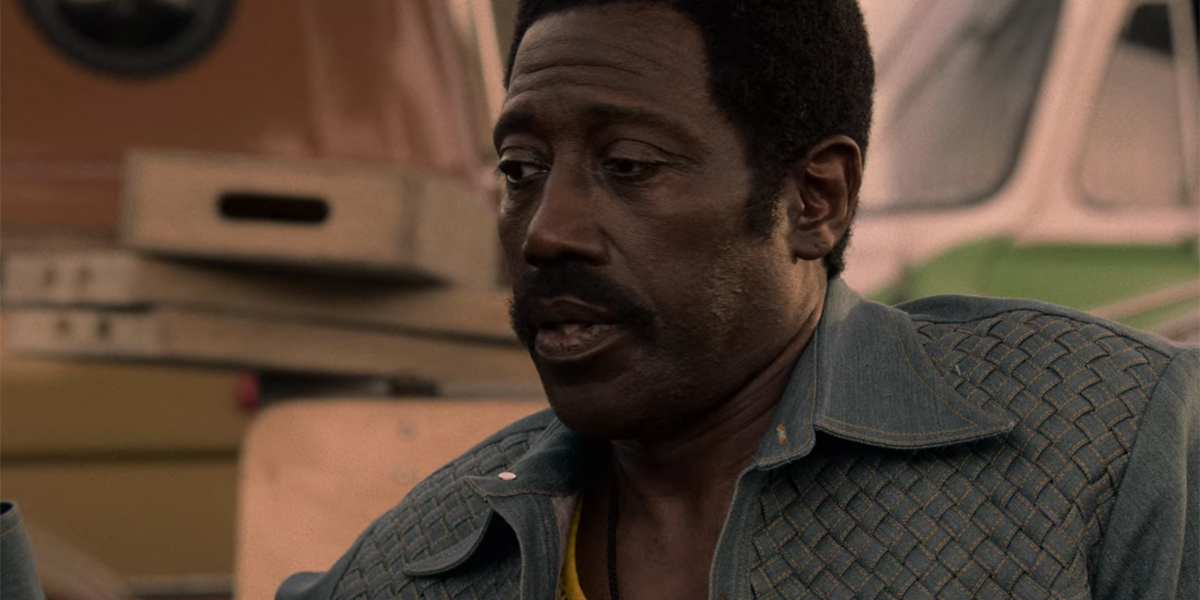
For the amount of cursing, vulgarity and nudity in Dolemite Is My Name, it might come as a surprise that it’s actually a pretty sweet and heartfelt film.
Dolemite is not here to shock and scandalize. It’s simply a loving, R-rated portrait of Rudy Ray Moore, a nobody who had the guts to believe in himself when no one else did, featuring a killer comeback Eddie Murphy performance.
The self-proclaimed “godfather of rap,” Moore was an Army veteran, stand up comedian, musician and born performer who in the 1970’s came to niche prominence for his rhythmic and raunchy Dolemite act. That character would beget both stand up albums and the 1975 blaxploitation film Dolemite, a low-budget production (reports say it cost around $100,000 to make) that made some $10 million at the box office.
But it’s almost irrelevant whether you know Moore’s name well, and how he inspired the likes of Dr. Dre and Snoop Dogg, or are learning about him for the first time: Dolemite Is My Name is just a good piece of entertainment. And it’s the kind of film that will help his legacy live on (Moore died in 2008 at age 81).
Directed by Craig Brewer (Hustle & Flow), Dolemite Is My Name transports you to Moore’s 1970s Los Angeles, thanks to Ruth E. Carter’s evocative costumes and Clay Griffith’s production design. There’s nothing terribly interesting about the way it’s told; it’s just a straightforward underdog story with a big beating heart.
Murphy plays Moore with a wide-eyed eagerness we typically only see on screen in much younger characters. He’s constantly told no or to stay in his lane. Even his friends (Craig Robinson, Mike Epps and Tituss Burgess among them) look at him with that kind of half-pitying/half-supportive smile that will leave the audience wondering if this is just a big dreamer who might not actually make it.
But he has an eye for talent and at a low point borrows some material from a local homeless man about a larger-than-life character named Dolemite, and finally he’s got people’s attention. But there are still many, many no’s he’ll have to overcome to get an album made and then released. And we haven’t even gotten to the cult classic movie yet.
While it’s a joy spending time with Moore as he ascends in the comedy world, the film really kicks into gear when he gets the idea to make a film one night after he and his buddies decide to see a movie — something funny — and are left scratching their heads at a packed showing of Billy Wilder’s 1974 remake of The Front Page with Jack Lemmon and Walter Matthau, wondering what the appeal is.
So they decide to make something that they want to see (kung-fu, boobs and action are a few of the requirements). Moore scrapes together money, friends, acquaintances, some strangers (a playwright played by Keegan-Michael Key, and actor D’Urville Martin, played by Wesley Snipes) and a few film school students and sets off to make a feature. The only problem? None of them really know how to make a movie. But they do their best which is often funny and always endearing.
Aside from Murphy, who eases back into stardom seamlessly, the other standout performance comes from Da’Vine Joy Randolph, a Tony-nominated stage actress who bursts off the screen as comedian Lady Reed. Moore “discovers” her one night on tour as someone with presence.
“Some people walk around with their own personal spotlight,” Murphy’s Moore tells her. The same could be said of Randolph, or Moore himself, and it’s a lovely thing to have a charming film like Dolemite Is My Name to show off both.
To paraphrase Dolemite, Rudy Ray Moore is his name, and exceeding expectations is his game.





